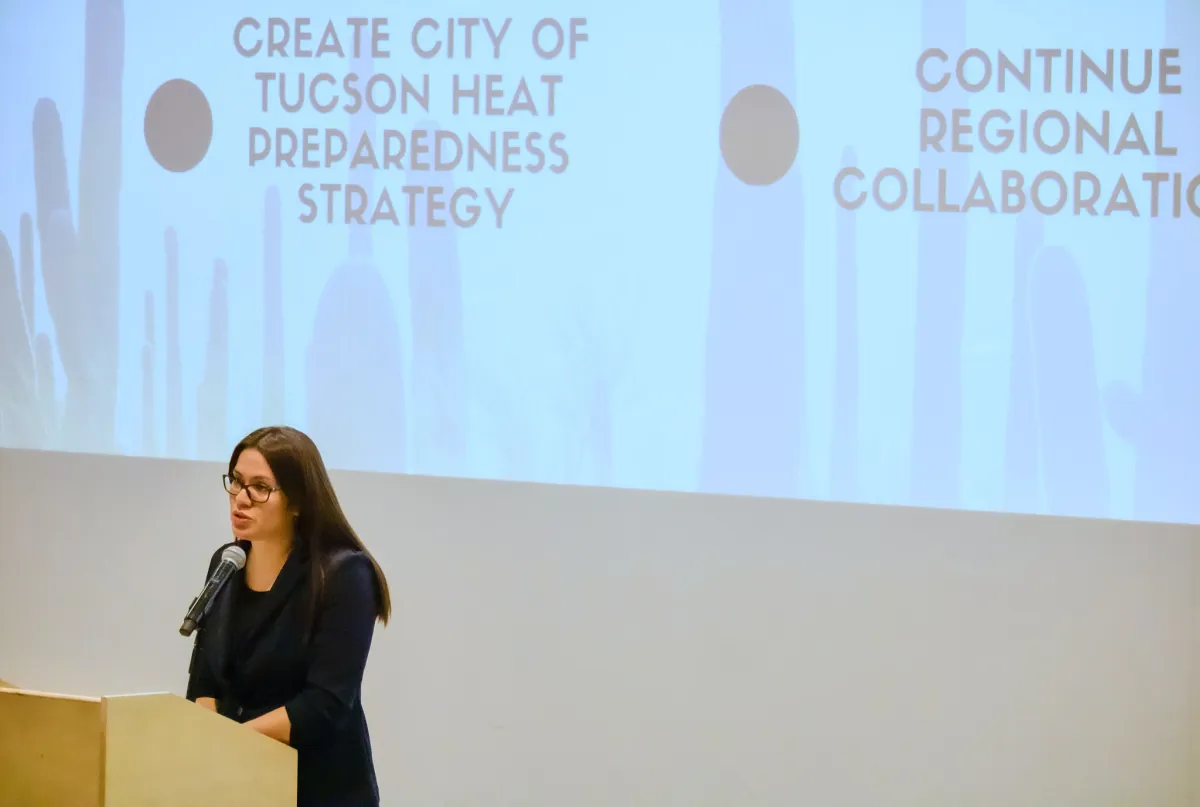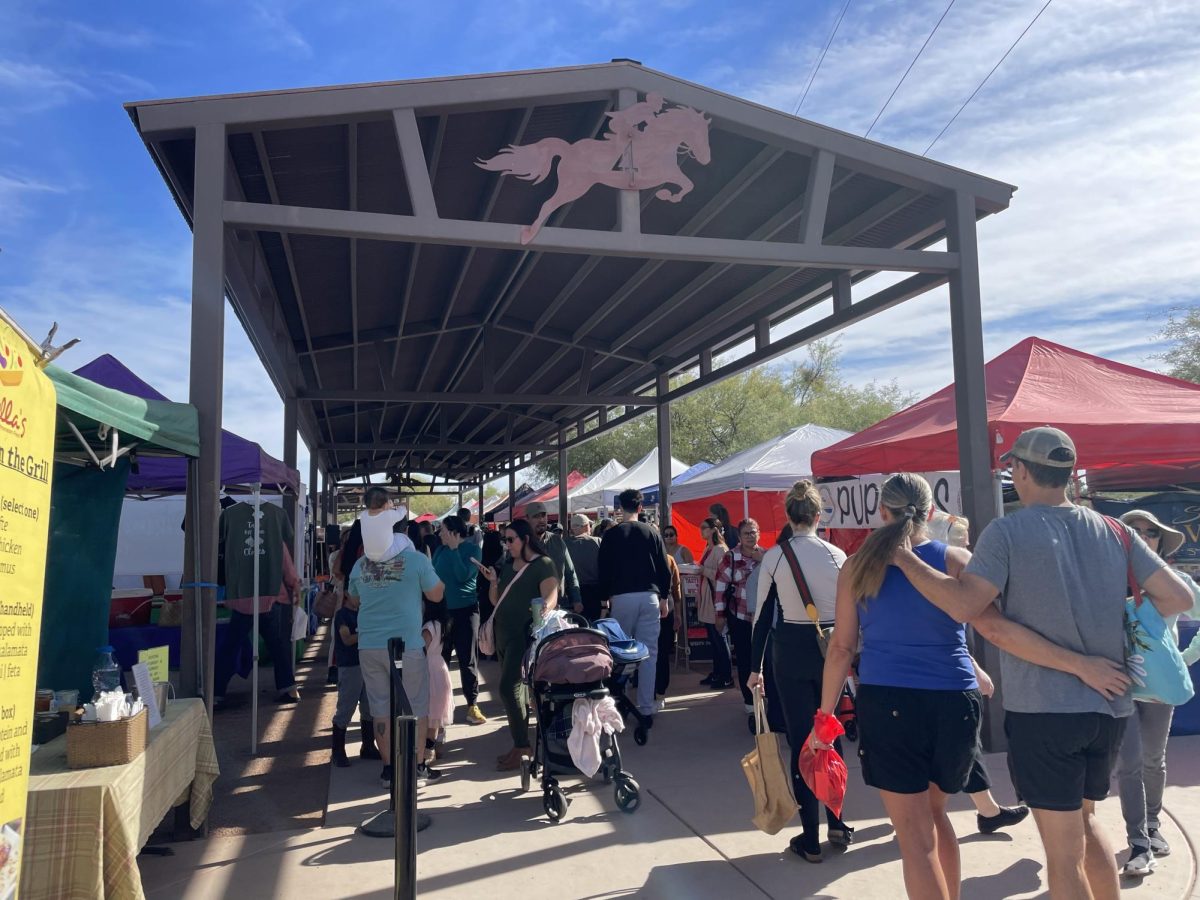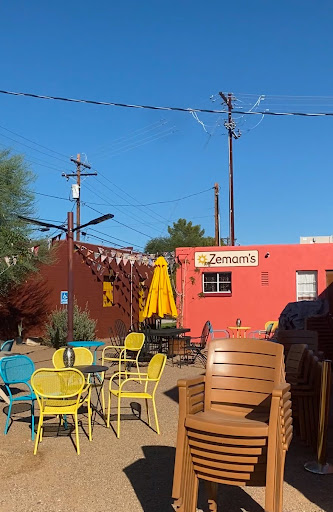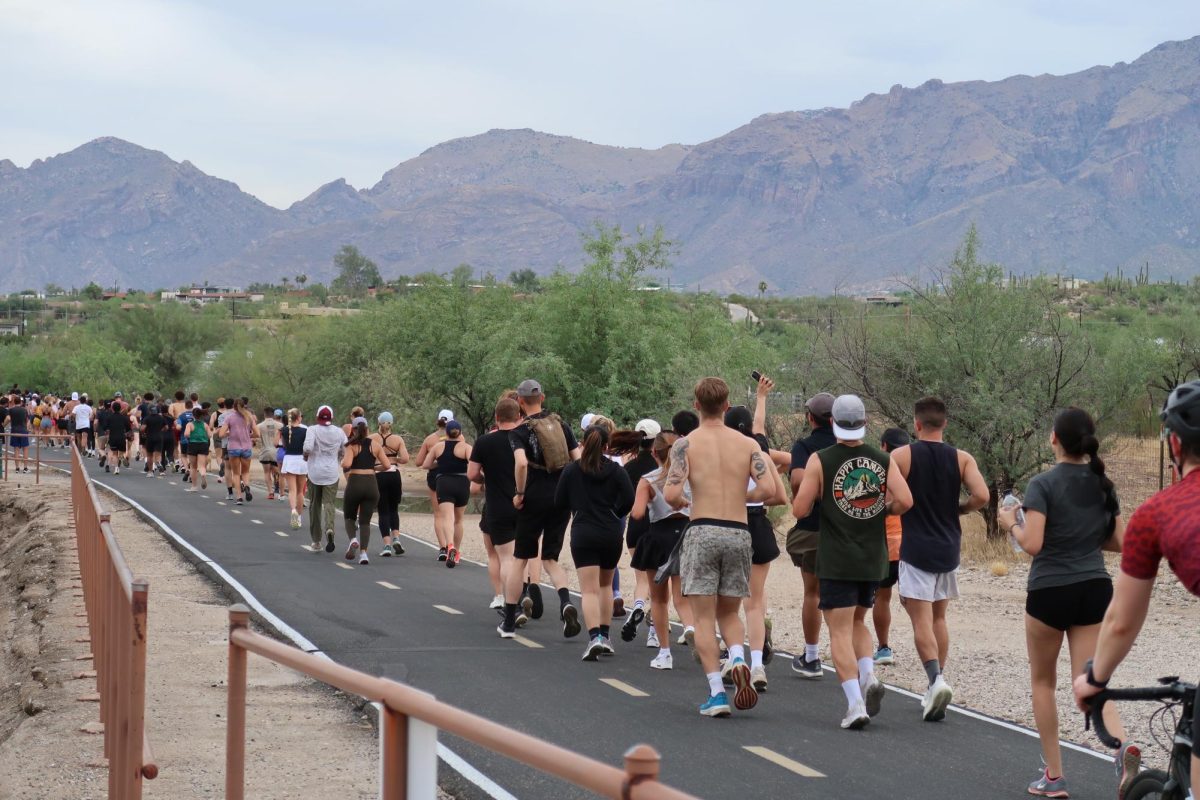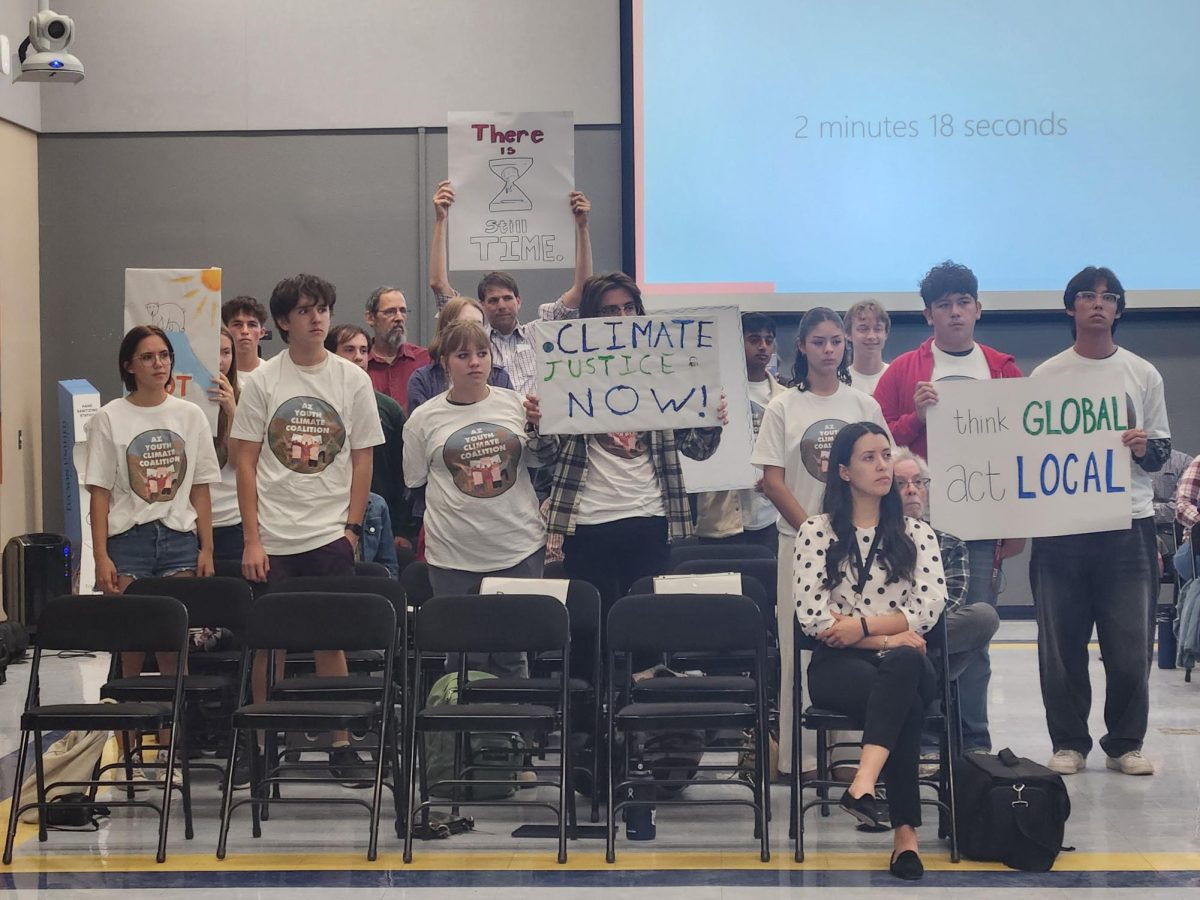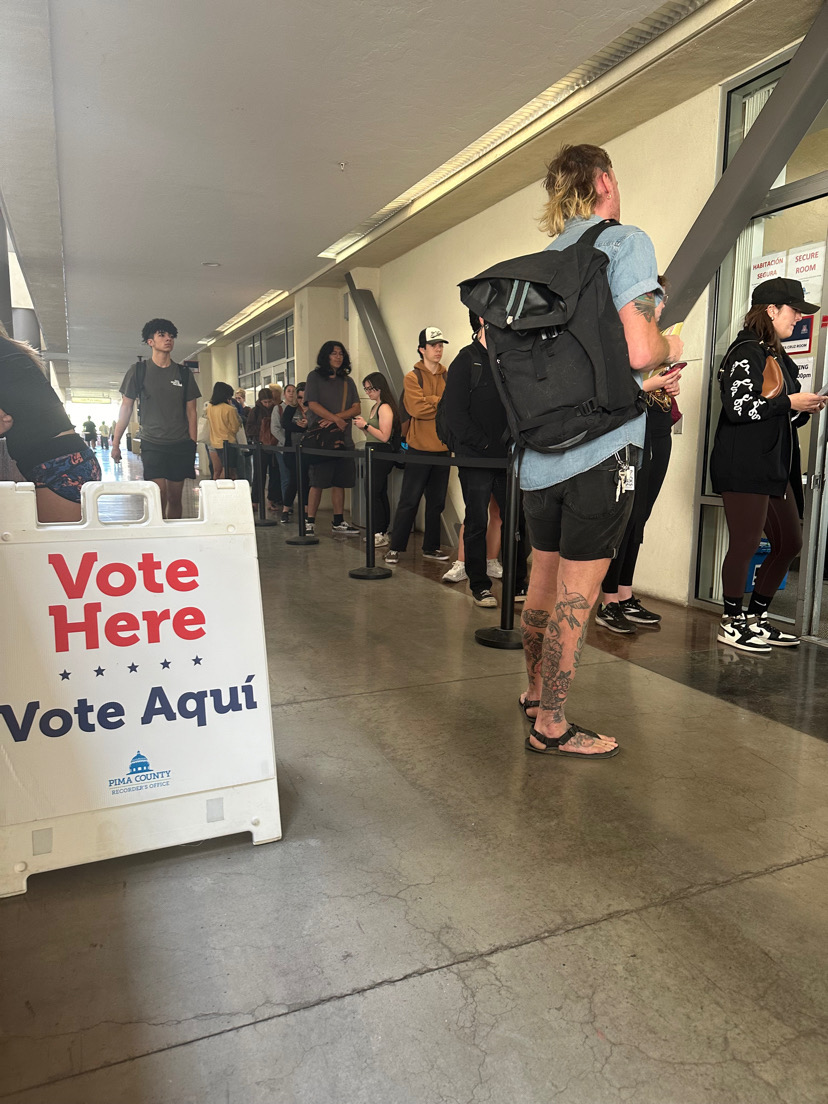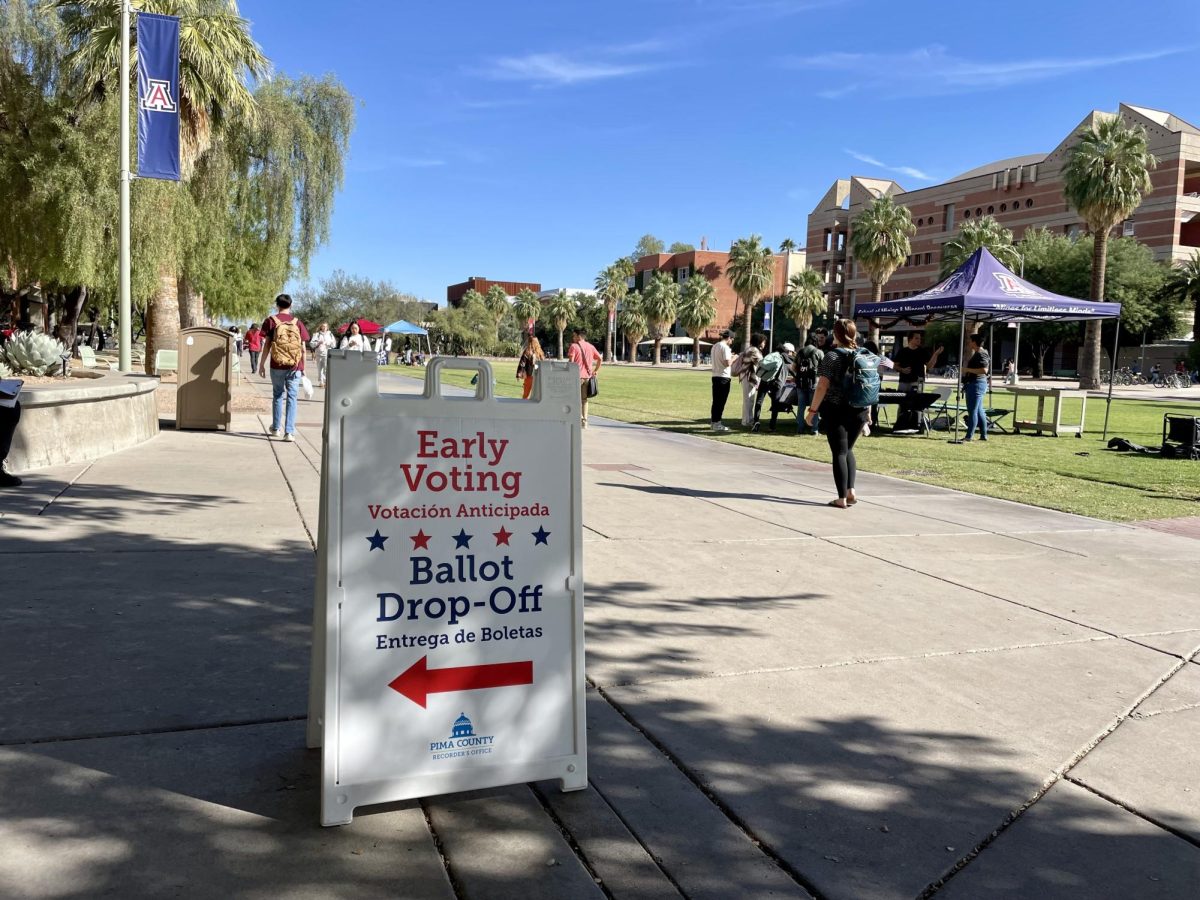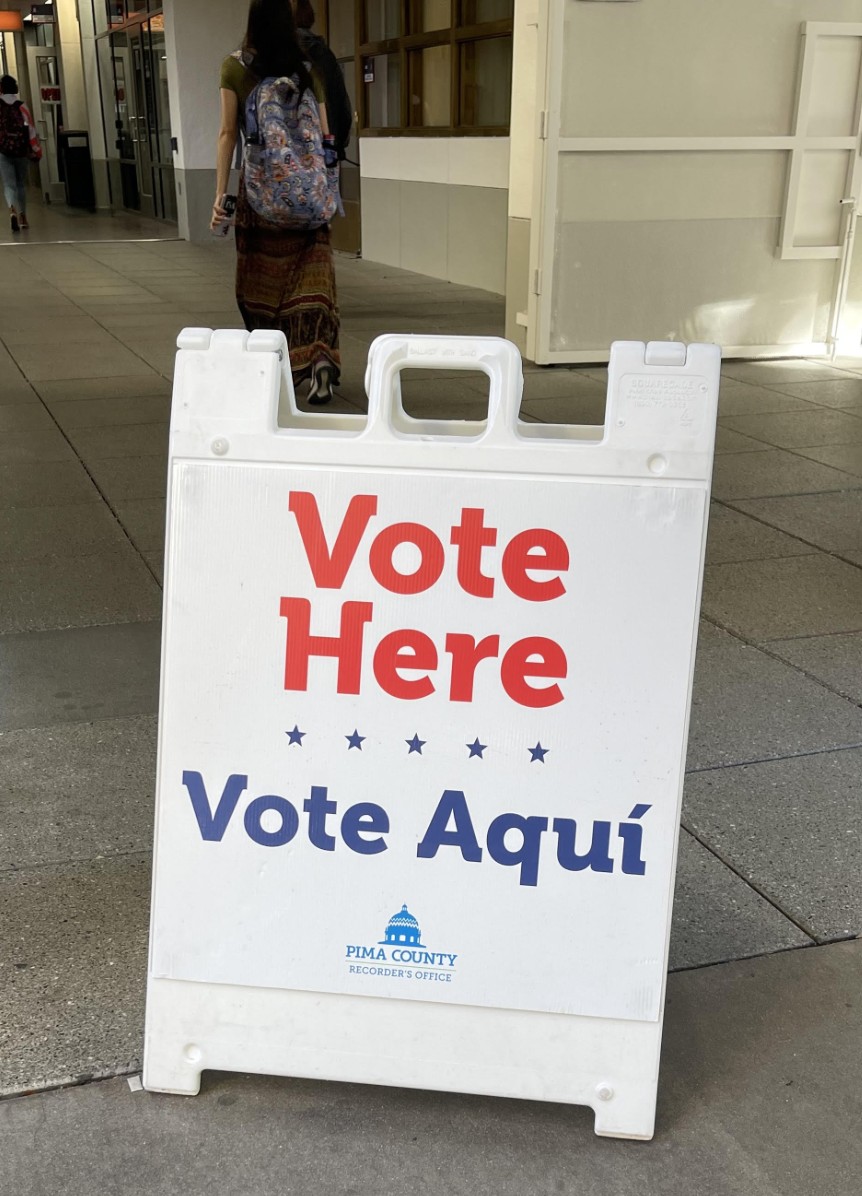This story first appeared in Arizona Luminaria.
“In a disaster, it’s the people next door that keep you alive,” Rosemary Bolza said, wearing a U.S. Public Health Service T-shirt and sitting among Southern Arizonans ready for a discussion that would put the needs of their desert neighbors first in the extreme heat this summer.
On a chilly Saturday in February, the long-time Tucson resident and other community members started the morning bundled up in sweaters and scarves. But they came ready to plan for another season of increasingly severe temperatures at Tucson’s first Southern Arizona Heat Planning Summit.
Bolza works with a local grassroots coalition called Building a Resilient Neighborhood, which encourages strong neighbor relationships in emergency preparedness.
“I would recommend that all of the city departments see this as a priority,” she said.
The free forum on climate action was open to the public. The goal for the daylong conversations was to bring people together for brainstorming heat resiliency in Southern Arizona. Fatima Luna, Tucson’s chief resilience officer told the more than 100 people at the event that there is no better time than the winter to prepare for the hot summer we know is coming.
Last July was Tucson’s hottest month on record, averaging at 94.2 degrees: 6 degrees warmer than normal. The National Weather Service cites 14 total monthly records either set or tied with July 2023, including 29 days of 105 degree — and hotter — high temperatures.
The summit, hosted at the University of Arizona’s Environment and Natural Resources 2 Building, was sponsored by the city of Tucson, Pima County Health Department, Climate Assessment for the Southwest, Tucson Resilient Together and several UA departments.
The group nearly filled a university lecture hall, and was split into five breakout sessions where conversations were focused on the following topics: public health and healthcare; community and neighborhood level action; workforce and heat protection; energy and our grid; and built environment.
We know not everyone was able to carve out time on a busy Saturday to make it to the heat planning summit. So with the environment being one of the main issues you’ve told us you want to learn more about, we made you this guide on how Southern Arizonans are working together for better solutions.
Communication within and across communities
Members who joined the community and neighborhood level action room were led by Luna and facilitated by Elise Otto, a UA doctoral student studying geography. The group used a set of questions to direct their conversation, but quickly shifted into their own brainstorm session.
Otto immediately started writing on the whiteboard, which quickly filled up in blue marker with the group’s reflections on existing heat resiliency programs and new ideas.
No matter where the brainstorm veered, community remained their priority. They focused on populations that are disproportionately affected by heat: people of color, mothers, unsheltered people, residents with mental health conditions, people with disabilities and families or individuals facing income inequality.
Bolza stressed the importance of spreading awareness block-by-block for environmental threats like heat, especially during extended power outages.
She proposed a neighborhood watch plan that would not only focus on crime as she said they do now, but also would serve as a way “to look out for each other.” Even in a middle-income neighborhood like her own, she said that some people do not have air-conditioning, which can be deadly in extreme heat.
Theresa Cullen, the director of the Pima County Public Health Department, presented sobering information about heat-related dangers from the health department. The county had 176 total heat-related deaths last year, she said, citing the Pima County Office of the Medical Examiner. About 54% of these deaths were either from migrant or unhoused communities.
Bolza is currently working with a Tucson Police Department community service officer on ways to improve neighborhood watch systems to involve more residents. This would be especially helpful, she said, because she and others have neighbors who live alone and would have no immediate help if they were injured or affected by heat.
Cooling centers were a hot topic of conversation in the neighborhood action roundtable. Members were particularly interested in scaling up the number of centers in Tucson.
People agreed that the current state of cooling centers — which are established in part by the Arizona Department of Health Services — is not ideal: They are too spread out and there are not enough of them, especially within reach of bus stops.
Tres English, co-founder of Sustainable Tucson, said that cooling centers should be in the hundreds. Schools, churches, libraries and other public sites with existing solar energy systems could serve as centers, he said.
Mackenzi Wintermoyer, the bus stop coordinator at Sun Tran, also mentioned the lack of proximity between bus stops and cooling centers. She sees bus stops themselves as an opportunity for heat response. Wintermoyer moved to Tucson from Maryland in July last year. The young woman, excited to “nerd out” with like-minded people, hoped to take new ideas back to work.
Wintermoyer is collaborating with Luna on a project to improve the green infrastructure, comfort and safety of bus stops in Tucson.
Part of their plan is to add call buttons to bus stops, which would provide access to first responders in case of a medical or safety emergency related to heat or otherwise.
Thousands of existing bus stops require substantial management. The two women are testing different methods to heat relief such as curb cuts and native species plantings at stops to assess best practices for implementation.
Curb cuts would allow water runoff in the streets to channel into tree basins surrounding bus stops, Wintermoyer said. Planting native species, she said, would ideally ensure self-sufficiency and minimal management.
“We took temperatures in July. Just having vegetation nearby — not necessarily even providing shade — the temperature at the bus stop and the ambient temperature around it all decreased,” she said.
The Environmental Protection Agency states that vegetation provides cooling through transpiration and with the collection of water vapor on leaves and in soil. On average, urban forests are 2.9 degrees cooler than urban areas without vegetation.
South Tucson has historically been disproportionately affected by heat as a result of inadequate urban forestry and other socio-economic factors. Cullen said the south side can be up to 5 degrees warmer than other parts of Tucson that have more trees.
Education is awareness
What are effective communication strategies to ensure that residents are well-informed about heat risks and protective measures?
This question was raised at the community and neighborhood level action breakout session, driving a passionate discussion about what Tucson can do better.
Diana Liverman is a semi-retired UA Regents Professor of Geography and long-time environmental scientist. She worked on the city’s Tucson Resilient Together plan as an advisor.
Liverman’s communication proposal at the summit was a disaster response booklet given to new renters and homeowners. The booklet would be in both English and Spanish, at the very least, and provide essential basics on how to deal with a power outage, heat wave or a fire, she said.
In the past, she dedicated a project for a general education course she taught to designing a disaster relief leaflet, and almost none of her students knew where to start. She said that currently people who move to the city — or even long-time residents — would have to search too many webpages for the answers they’re looking for.
Another suggestion came from Kara Harter, a board member of the Menlo Park Neighborhood Association. She acknowledged that while not everybody has access to technology, a universal alert system would be a good starting point for raising awareness during heat waves. It would function similar to an Amber Alert, but with more specifics such as times that are safe to go outside, she said.
An additional conversation around weather and climate communication came later in the day at lunch time when Tom Dang from the National Weather Service in Tucson presented.
Dang, the science and operations officer, started by asking the crowd if they would trust a forecast predicting rain at a specific time in seven days. He approximated that 20% of the room raised their hand.
Then he asked the same question, but switched the rain forecast to a heat wave forecast. About 70% of the room raised their hands that time.
The group’s trust in heat forecasts was affirmed when Dang said that high pressure systems that are hot and dry, like in Arizona, are also slow moving and typically highly predictable. As their weather team’s heat wave verification grew significantly last July, he warned that another dangerously hot summer is likely.
Dang said the weather service has shifted its mindset. They used to think: “Here’s the weather, do whatever you want with it,” but now its services are becoming more communicative and caring for citizens. The service’s recent plans include new messaging tools that are probabilistic, meaning they provide temperature ranges and likelihood percentages rather than single temperatures.
The benefit of a probabilistic approach is that it provides several outcomes with more certainty and builds trust between the weather service and the people who depend on this information. Dang said weather risks and combinations of heat and the Social Vulnerability Index will become new messaging tools as well.
The Social Vulnerability Index is defined by the Center for Disease Control as the potential natural disasters, human-caused disasters or disease outbreaks identified in certain communities.
Another way the National Weather Service is increasing its community involvement is by asking people for feedback. Dang ended his presentation asking listeners to ponder the following:
- How far in advance of a heat wave would you like to be alerted that it is coming?
- How far in advance do you make decisions about a heat wave?
- Would these new heat messaging tools that emphasize probabilities, heat risk, and Social Vulnerability Index benefit your decision making?
‘Every death that is related to heat is preventable’
At the end of the day as the forum wrapped up, Luna told Arizona Luminaria she was excited to see people in attendance from across all sectors of the Tucson area.
“For me, it’s always very helpful to listen to the people that are on the ground doing the work, the people who are experiencing the heat,” she said.
We all have blind spots, she said, and the summit was planned to assess our current strategies and how to fill the gaps moving forward.
“We need a consistent messaging strategy around heat because every death that is related to heat is preventable,” Luna said.
As the entire group reconvened in the late afternoon, Luna left action-takers with next steps: Share summit results; review strategies; help create a city of Tucson heat preparedness plan; and continue community and regional collaboration.
The official conversation ended, but people weren’t ready to leave. A line formed at Luna’s podium. Some asked questions. Others thanked her. And several carried on their own chats with neighbors they’d met that day who also want to build environmental resilience in Southern Arizona.


